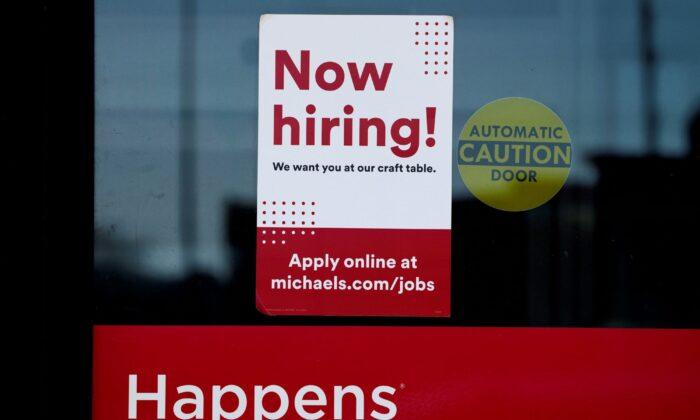Employment growth has averaged 278,000 per month in the first six months of 2023, lower than the 399,000 average in the first half of last year.
The unemployment rate slipped to 3.6 percent, from 3.7 percent, and matched economists’ expectations.
The BLS noted that the change in total non-farm payroll employment levels for April and May were revised downward by 77,000 and 33,000, respectively.
Average hourly earnings remained unchanged at a higher-than-expected 4.4 percent year-over-year. On a month-over-month basis, average hourly earnings rose by 0.4 percent to $33.58. Average weekly hours inched higher to 34.4 from 34.3.
Job gains were led by government (60,000), health care (41,000), social assistance (24,000), construction (23,000), and professional and business services (21,000). Retail trade lost 11,000 workers, while transportation and warehousing lost 7,000. Manufacturing payrolls increased by 7,000.
The number of people working two or more jobs rose to 7.995 million, up from 7.762 million in the previous month. The number of people working part-time for economic reasons surged by 452,000 to 4.2 million. The number of long-term unemployed was flat at 1.1 million, 18.5 percent of the total unemployed.
“On the heels of May’s blockbuster gains, today’s jobs report finally reflects the slower growth forecasted since early 2023 and a general return to market norms,” Cody Harker, the head of data and insights of recruitment marketing firm Bayard Advertising, said.
U.S. stocks dipped after the jobs report showed hiring cooled in June but wage growth was more more than predicted.
The U.S. Treasury market was mixed. After topping 5 percent for the first time since the global financial crisis on July 6, the 2-year yield tumbled by more than 3 basis points to about 4.97 percent. The benchmark 10-year yield picked up a little more than 1 basis point to nearly 4.06 percent.
Labor Data
Heading into the NFP report, there were other labor data suggesting that conditions remain tight, more than one year after the Federal Reserve started raising interest rates.ADP economist Nela Richardson noted that much of the increase was concentrated in consumer-facing industries, including leisure and hospitality (232,000) and education and health care (74,000).

“The drop in cuts is not unusual for the summer months. In fact, June is historically the slowest month on average for announcements. It is also possible that the deep job losses predicted due to inflation and interest rates will not come to pass, particularly as the Fed holds rates,” Andrew Challenger, senior vice president at Challenger, Gray & Christmas Inc, said in a statement.
Second Half of 2023
A chorus of economists had warned that U.S. job creation would be flat by the halfway point.Many labor estimates have been incorrect this year, and, according to Peter Earle, an economist at the American Institute for Economic Research, this might mean that “employment forecasts have suddenly become hugely, systematically wrong.”
“Fed interest rate hikes are either acting with a longer lag than usual or having little effect at all on slowing the economy down,” Mr. Earle told The Epoch Times.
As the national labor market remains solid, this gives the U.S. central bank further ammunition to raise interest rates as early as the July Federal Open Market Committee policy meeting.
The futures market is already anticipating a quarter-point hike at this month’s meeting. But it remains unclear as to when the Fed could pull the trigger on another 25-basis-point increase. Fed Chair Jerome Powell refrained from dismissing consecutive meeting rate hikes.
“We should expect another 25-basis-point hike from the Fed in a few weeks,” Mr. Earle said.
But the plight of the U.S. economy through the end of this year “remains a question,” Mr. Hamrick noted.
“If the inflation-fighting Fed feels compelled to raise interest rates further, as it has recently signaled, risks of economic contraction remain, or even grow,” he said.





